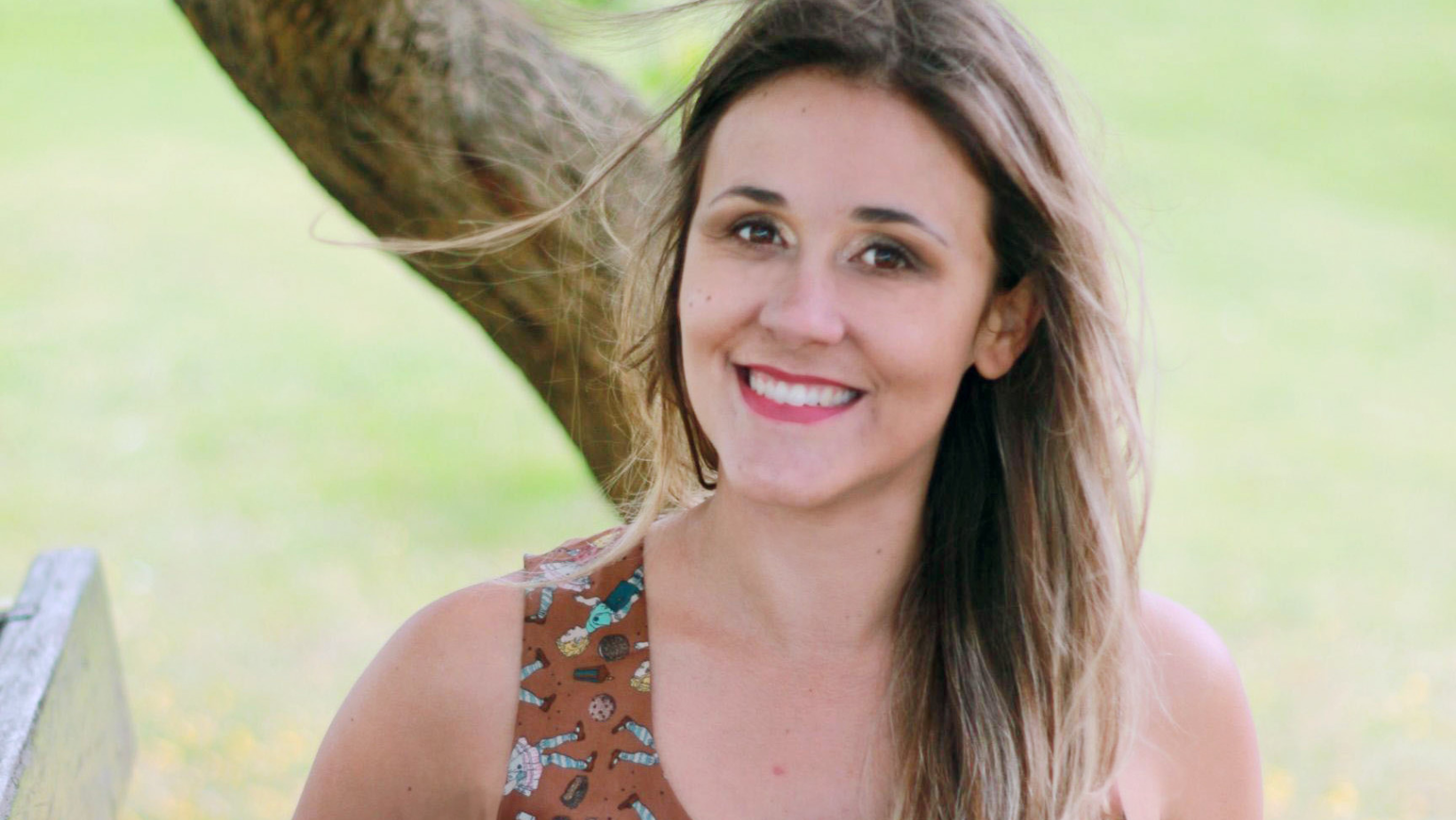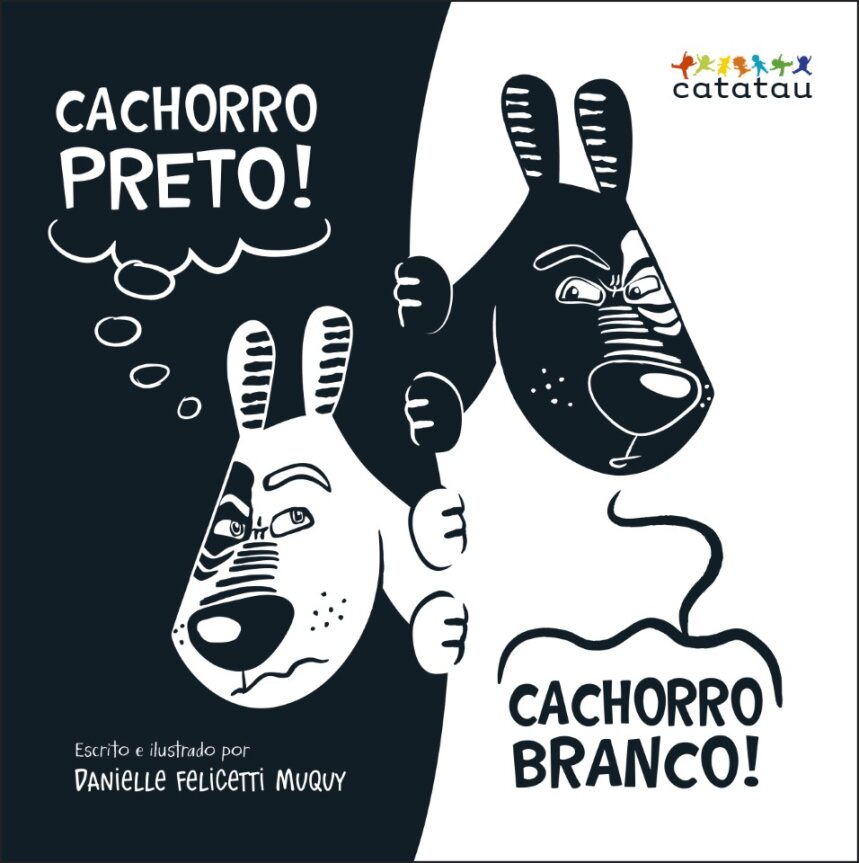
Writer and illustrator Danielle Felicetti Muquy launches “Black Dog! White Dog!”, an illustrated book that explores diversity and friendship through the story of two dogs of opposite colors. The work, published by DVS Editora’s children’s label Catatau, uses colors and a dynamic narrative to teach tolerance and respect among children.
What inspired you to create the story “Black Dog! White Dog!” and exploring themes such as tolerance and diversity through this narrative?
Acceptance of differences and prejudice have always been topics that bothered me, even since I was a school-age child. I always dreamed of publishing an illustrated book, but I didn’t want to create a story just to entertain. As I am a fan of philosophy, I have always read many books about human values and they were the ones that influenced my choice. I can say that it was a combo of “real life and philosophical books”. And of course, the desire to make a difference in the world and make it a little better.
Could you share a little about the creative process for developing the illustrations and how you decided that the book would start in black and white and gradually gain color?
When I was studying Graphic Design at Belas Artes de São Paulo, I deepened my research into illustrated books and my interest was in works that told stories beyond the text, with creative use of visual resources. I opted for the minimalist contrast between black and white to bring the characters to life and start the neutral narrative, highlighting seemingly opposing worlds. The characters themselves bring the colors to the story when they feel the need to transform the universe in which they live so that they can live in harmony. I also thought of a simple shape for the dogs, envisioning the children’s encouragement and enjoyment of the drawing. I’ve already received wonderful drawings of the puppies that really moved me!
As a graphic designer and illustrator, what specific techniques did you use to capture the emotions and evolution of the relationship between the two dogs?
I played with the middle of the center (where the staple goes and there is the division between the two pages), as if it were a border between the world of white and the world of black. To bring them closer together, I “caused” an incident in which the dogs switched colors with each other so they realized they were the same. This way, they would discover not only their physical similarity, but their affinity and the same tastes so that they could form a beautiful friendship, that is, the moment where colors appear. A colorful and diverse world begins to emerge, both printed on the pages and in the discovery of new friendship.
The melodic language of the book is highlighted as ideal for reading aloud. Are there any particular techniques you used to make the text so engaging for listeners?
I looked for short texts, some rhyming and a certain repetition play with some words. Reading becomes fun and fluid when we combine a small text with a simple image. I think of this book as a “picture book”, where the two resources work together with the aim of pleasing the ears and eyes, without causing difficulties in diction or slow understanding of the message through complex and/or very distracting figures.
“Black Dog! White Dog!” is presented as a useful tool for parents and educators. What are the main messages you hope children and adults take away after reading?
The main message is to absorb, understand and practice respect, tolerance for diversity, inclusion and eradication of bullying. Avoiding pre-judgment is a good start to avoiding prejudice. And this is a daily practice, which both adults and children should do. In fact, we all know that a child is not born prejudiced, he becomes it, he learns through the example of the society in which he is inserted. Touching sensitive topics like this from a young age helps create empathetic human beings. And we urgently need our society to be more empathetic and sensitive, right?

In what aspects did your own experiences influence the creation of the characters and the plot of the book?
I have always tried to be fair in my judgments towards others. I believe it has been since I was a child, as I have reports from relatives about this. My stepmother told me that in the second grade of elementary school, when she picked me up from school, she noticed that I was the only child who played with another child who didn’t have a hand. I don’t remember this child and I don’t think I recorded her in my memory because in my childhood vision, she was just another child like the others, who ran, laughed and played with me. This topic of prejudice has ALWAYS bothered me and continues to bother me in adult life, since when watching the news or following social media, reports and incidents about violence resulting from prejudice and bullying are always in vogue.
You mention that you often take the book’s characters to schools. How has the children received these visits and what has surprised you most about these interactions?
It’s been amazing and exciting! All the exchanges with the children were rewarding and touching. They are genuinely interested in discussing bullying, are open to discussion and make a point of telling me that they are completely against prejudice. Children are smart and sensitive, they understand the puppies’ journey very easily, so I don’t need to go there and state the obvious. And the visit ends up being a fluid, instructive and fun conversation. I also open the process of creating a children’s book for them. I like to bring hope and new perspectives so that children can continue dreaming of being whatever they want to be, regardless of their resources and origins. After all, I am a “child” of a public school and come from a humble family. I reiterate in the classroom that if I can make my dreams come true, they can too.
Are there any authors or illustrators who have particularly influenced your style or approach to writing and illustrating children’s books?
I think every reference influences us in a certain way, but there isn’t one or the other that influenced me the most. I like authors/illustrators who deviate a little from the obvious, whether in the graphic style, opting for a reduced color palette and simplistic illustrations, or in the structure of the book or in the creative way in which they approach the theme of the story. An example of this is Isol , the Argentine illustrator. I admire the style of his gestural illustrations and collages. The different structure of the book “Having a duckling is useful” in the accordion format, where on one side it tells the perspective of the rubber ducky, and on the other, the boy who plays with him, is brilliant! I’m currently in love with “The Boy, the Mole, the Fox and the Horse”, by author Charlie Mackesy , a delicate, sensitive book, drawn in scribbles whose themes are kindness, goodness and timeless human issues. “Onda”, by Suzy Lee, South Korean writer and illustrator, is incredible too! She also used brain division to make her story more interesting. This divider separates the little girl who wants to face the sea wave and the sea wave, which sometimes advances and sometimes moves away from her, until the moment she decides to move to the other side of the page where the wave is. It is a book without text and can be “read” according to one’s imagination. I only mentioned a few examples because I can’t summarize all the ones I admire here.
In addition to encouraging acceptance of differences, the book also explores the idea of friendship. Can you tell us more about how you developed this theme throughout the story?
Friendship is one of the most solid and beautiful human bonds. Quoting the philosopher, teacher, writer, poet and speaker Professor Lúcia Helena Galvão, “The great human need is the need for fraternity, we grow through others, coexistence is one of the greatest centers of learning that exist. A friend responds to our human needs. To humanize yourself, you need humanity.” I think friendship matures us, helps our human development and enriches our daily lives . In the book I imply that good friendships can come from people with whom we would never imagine creating this bond. It is important to be open, avoid pre-judgment and learn the virtues of patience and curiosity to get to know and, perhaps, be surprised by this mysterious entity known as “the other”.
What are your next projects? Are there plans for more children’s books or perhaps a continuation of the adventures of the two puppies?
Yes! I have several “drawer books”. Drafts, roughs and ideas gathered in a folder I have on the table. There are some stories that I want to tell in books and that are more mature, with arranged designs and structure, and others are on the way to being born. I lack time, like every modern adult, right? Without giving away too many spoilers, one of them will be about point of view, the importance of understanding that everyone sees the world in a very particular way and what we can learn about that. Regarding a continuation of the puppies’ adventures, everything is still in the realm of imagination, but there are chances of putting these ideas on paper and creating a new volume.
Follow Danielle Felicetti Muquy on Instagram


